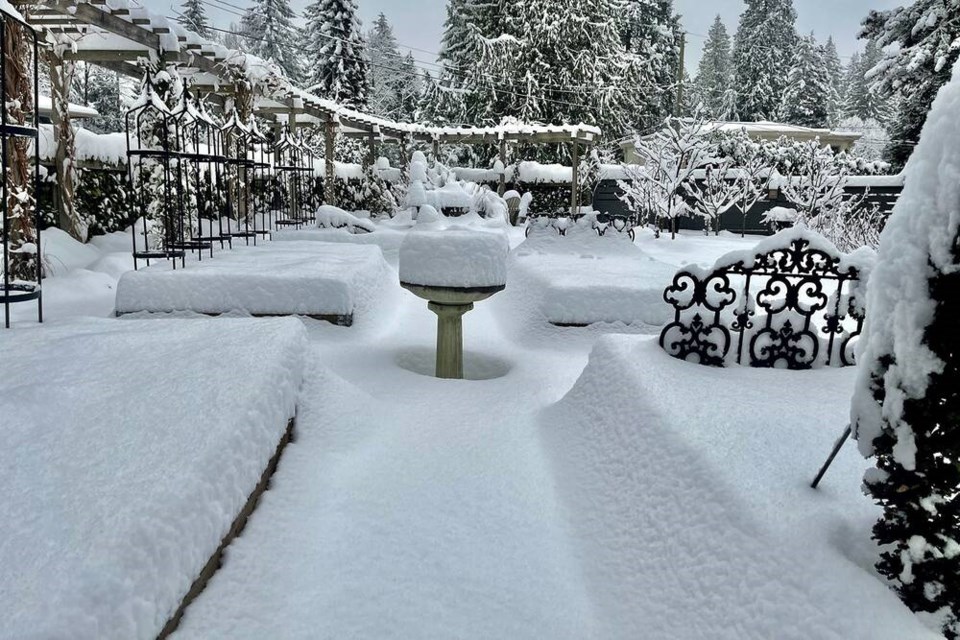As I wander our gardens buried under a deep blanket of insulating snow, I can’t help but empathize with new gardeners for whom the concepts of over-wintering beds and growing cold-weather crops are perplexing.
Advice is conflicting, and my opinion only adds to the surplus, but since I’m currently geeking out on winter soil biology, I will share what I’ve learned recently through experimentation and observation.
We know that healthy, organic, bioactive soil grows nutrient-dense food, rich in beneficial phytonutrients, so I am always experimenting with ways to feed and nurture soil microorganisms and fungi.
This winter, we opted to rest all nine of our raised beds – to leave them uncovered by cold frames and fleece, and to encourage the natural cycling of atmospheric moisture through the soil from above and below, unimpeded.
At around the time of first frost, we added several strategically layered inches of biologically super-charged vermi-compost to the surface of eight of the raised beds, before blanketing them with organic straw and leaves. We left one bed as a control, adding the straw and leaf mulch, but omitting the layers of inoculated compost.
Having studied U.K. gardener Jack First’s technique of early cropping using an age-old technique called “hot bedding”, I was inspired to see if I could instead create and sustain a low-grade simmer of warmth throughout the winter, to give us a microbiological head-start to the 2024 gardening season.
Traditional hot beds rely on a 30 cm or deeper layer of fresh horse manure mixed with straw (stable bedding) as a contained base layer, to heat a rudimentary shallow cold frame placed on top. Historically, hot beds were utilized to start seedlings earlier in the season than would otherwise have been possible – a precursor of sorts to electric heat mats.
I’ve learned that soil microorganisms live and travel in a film of water in soil, so my goal was to keep the soil in our “warm beds” from freezing for as long as possible, over as great of an area as possible. Although some soil bacteria have been found to be active in low temperatures, and will move into water with a higher concentration of salts as fresh water freezes, or even produce internal antifreeze of their own, they are much more active when the soil is above freezing.
We will see how things work out ultimately, and if the living mulch layer is deep enough to insulate meaningfully through winter. But so far we are doing quite well. Even with Arctic winds pounding the beds recently, when the temperature in our gardens dropped to -17 C overnight, soil in the warm beds resisted the freeze.
Anecdotally, I declare success. Sparrows bath regularly in the warm bed topdressing, burrowing into the duff and feasting on active organisms. The control bed looks much as it did late October, but all eight warm beds have darkened in surface colour – perhaps as a result of accelerated decomposition and slightly higher temperatures.
Yesterday, I checked the soil temperature in the exposed warm beds against soil temperature in both the control bed and in the dwarf fruit tree orchard. The warm beds tested at 35 F (1.7 C) on average, while the control bed and ground were both below freezing at 30 F (-1.1 C).
Next year, I will build an experimental hügelkultur-hotbed hybrid, using a deep layer of finely mulched organics instead of manure. Until the widespread use of the herbicide/desiccant glyphosate is prohibited in Canada, it is possible that horse and cow manures, and bedding-grade straw would be contaminated.
Food for thought on cold and snowy days.
Laura Marie Neubert is a West Vancouver-based urban permaculture designer. Follow her on Instagram @upfrontandbeautiful, learn more about permaculture by visiting her Upfront & Beautiful website or email your questions to her here.
For a taste of permaculture, watch the video below:




